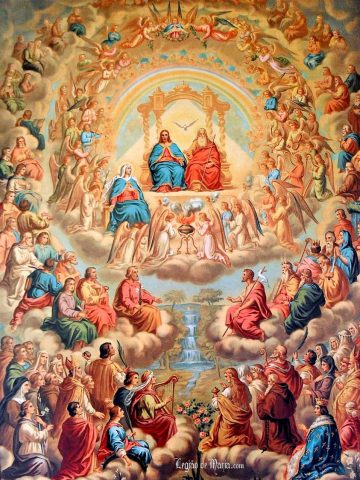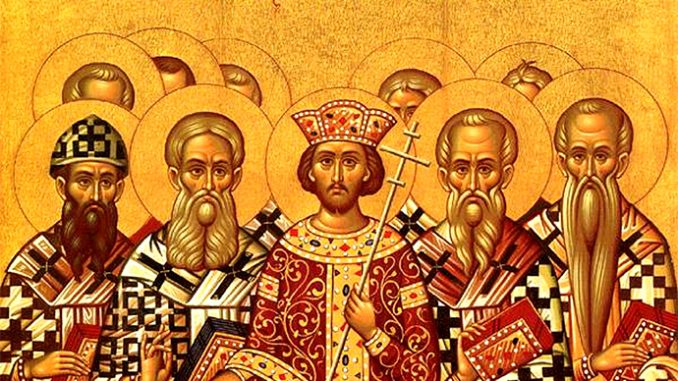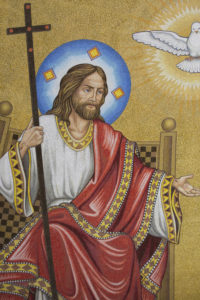The Story of the Solemnity of All Saints – The earliest certain observance of a feast in honor of all the saints is an early fourth-century commemoration of “all the martyrs.” In the early seventh century, after successive waves of invaders plundered the catacombs, Pope Boniface IV gathered up some 28 wagon-loads of bones and reinterred them beneath the Pantheon, a Roman temple dedicated to all the gods. The pope rededicated the shrine as a Christian church. According to Venerable Bede, the pope intended “that the memory of all the saints might in the future be honored in the place which had formerly been dedicated to the worship not of gods but of demons” (On the Calculation of Time).
But the rededication of the Pantheon, like the earlier commemoration of all the martyrs, occurred in May. Many Eastern Churches still honor all the saints in the spring, either during the Easter season or immediately after Pentecost.
How the Western Church came to celebrate this feast, now recognized as a solemnity, in November is a puzzle to historians. The Anglo-Saxon theologian Alcuin observed the feast on November 1 in 800, as did his friend Arno, Bishop of Salzburg. Rome finally adopted that date in the ninth century.
Reflection
This feast first honored martyrs. Later, when Christians were free to worship according to their consciences, the Church acknowledged other paths to sanctity. In the early centuries the only criterion was popular acclaim, even when the bishop’s approval became the final step in placing a commemoration on the calendar. The first papal canonization occurred in 993; the lengthy process now required to prove extraordinary sanctity took form in the last 500 years. Today’s feast honors the obscure as well as the famous—the saints each of us have known.
https://www.franciscanmedia.org/saint-of-the-day/solemnity-of-all-saints







